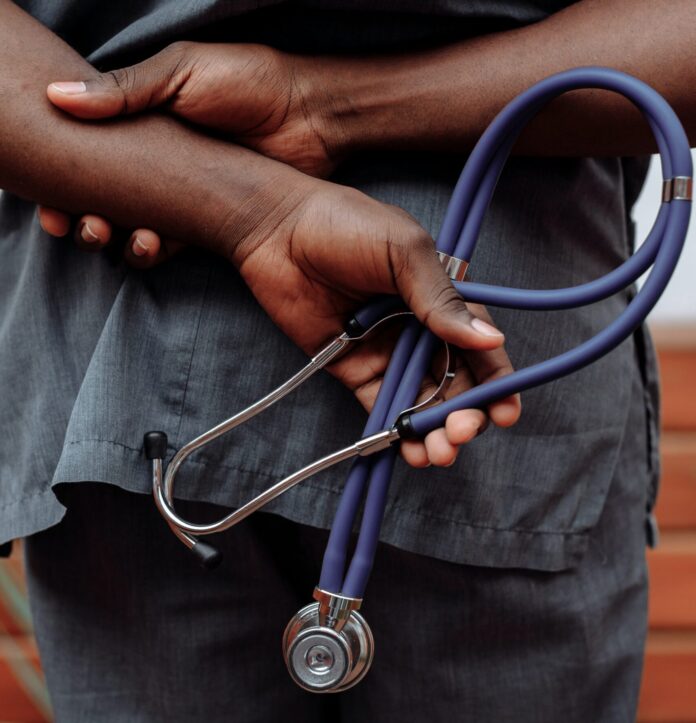
By
No one is coming to save them.
It should be no surprise families with chronically ill children are behind on rent. They are behind on bills.
After all, the United States is the only wealthy nation without guaranteed universal health coverage. Our system simply isn’t set up to save people — it’s designed to rake in cash for private insurers. And the underfunded, crumbling government programs that do exist aren’t enough to keep children and their families from sliding into poverty.
LaJoy Johnson-Law, a Ph.D. student in Washington D.C., calls her daughter Abria a “miracle baby.” Abria was born at 23 weeks, at 1 pound, 6 ounces — a tiny little warrior with everything stacked against her.
Abria was diagnosed with chronic lung disease, a form of extreme asthma, when she was a newborn and later developed epilepsy. She spent her first five months of life living in the neonatal intensive care unit — but her bouts in and out of the hospital had only just begun.
They live in Ward 8, an area housing mostly Black residents, many of whom are low-income. In 2015, the D.C. Department of Health ranked Ward 8 with the highest rates of asthma among adults.
Why does this ward have the highest rates of asthma?
The answer is simple: poor housing and air pollution.
“Housing is such a big issue, I think, in D.C. period, but I’m sure it’s a bigger issue with Black families because of the poverty level,” Johnson-Law says. “If you’re taking care of these chronically ill children, how much income can you really have?”
An Urban Institute study found that economic segregation within low-income ZIP codes had higher rates of Black children with preventable hospitalizations. Laura Smith, a research associate at the organization, says the primary reason for these hospitalizations is a lack of access to resources.
“That’s all Black families want,” Johnson-Law says. “We just want our kids to have access to quality healthcare.”
LAJOY JOHNSON-LAW, PHD STUDENT IN D.C. CARING FOR A CHILD WITH CHRONIC DISABILITY.
Those resources include preventative care — like doctors’ visits, inhalers, or access to medication refills. The thread between this study and Johnson-Law’s experience is in territories like the District of Columbia, low air quality has been linked to congenital disabilities, premature birth, and asthma.
Black mothers can have pregnancy complications for a number of reasons. But historical segregation certainly doesn’t help. And it continues to exacerbate the health conditions of Black children in these neighborhoods.
Children between 2-17 living in a low-income ZIP code, were more likely to have a preventable hospitalization for asthma. The District of Columbia ranked second, with 302 per 100,000 Medicaid-covered children admitted to the hospital for asthma.
“In neighborhoods with more low income and Black folks, there might be less availability of adequate health care, outpatient health care … a lack of culturally competent providers, there’s all these different factors that are driven by a history of structural racism,” Smith says.
The Urban Institute study specifically focuses on preventable hospitalizations of Medicaid and Children’s Health Insurance Program (CHIP) enrolled children. But, it highlights that regardless of insurance, barriers to accessing quality health care are arduous for Black households.
“Just because kids have Medicaid coverage doesn’t necessarily mean they have access to care,” Smith says.
To access quality care, it needs to be available. This requires policymakers to invest more money in communities and neighborhoods like Johnson-Law’s.
Abria is now 11-years-old. Asthma flare-ups happen almost every time the seasons change. Her asthma symptoms can range from a cold to a multi-day hospital stay. For Johnson-Law, accessing resources like quality doctors, specialists, and money has been difficult to manage.
“If I’m being honest, I’m just constantly behind. Currently, I’m behind on my rent,” she says. “You know, facing homelessness.”
When Abria was 3, Johnson-Law went through a divorce, leaving her as the sole caregiver and provider for her daughter. At one point, she faced eviction. Throughout the years, hospital bills, preventative care expenses, and the cost of medications piled up with little rescue in sight.
In the District of Columbia, there were no federal programs providing assistance to caregivers taking care of children with disabilities — until 2019. But, the current Close Relative Caregiver Pilot program does not include parents who are caregivers to their children. The funding is for District residents who are raising their siblings, nieces, nephews, cousins, and godchildren.
Another source of assistance is Medicaid, but parents who exceed the income threshold, do not qualify for rental assistance or SNAP. Johnson-Law has been employed for the last five years, although she can’t afford her bills — she makes too much to receive federal Medicaid assistance.
“I don’t have generational wealth. I don’t have another source of income coming into my house, it’s just me,” she says. “And so, I just gotta figure it out.”
Abria has seven specialists. When she gets sick, it’s more common for her to have epilepsy episodes. Johnson-Law says her daughter has come a long way, but the scattered resources on a single-parent income have heightened the toll.
“We have an information sharing problem here in D.C., where there’s so many resources, but for some reason, people don’t know about them,” she says. “There is no one-stop shop where you can get all the information.”
Meanwhile, the absence of equitable and necessary healthcare continues to create a dangerous intersection of poverty, chronic illness, and housing instability. Families like Johnson-Law’s are kept at a disadvantage with no way out of the situation due to a lack of adequate financial assistance.
The cycle will continue until more federal, local, and state funding is provided to help caregivers of children with disabilities. Or until the United States decides to, like every other wealthy nation, commit to universal health coverage.
“That’s all Black families want,” Johnson-Law says. “We just want our kids to have access to quality healthcare.”



